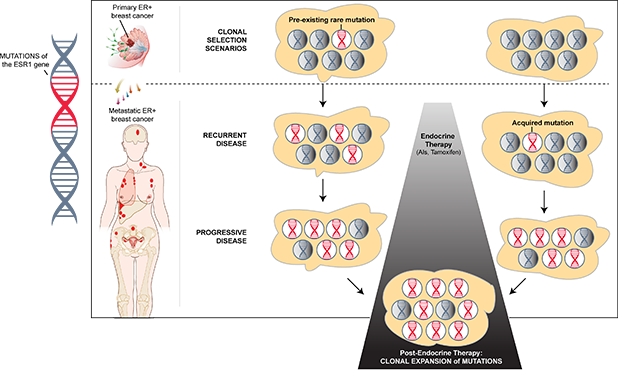Breast Cancer
Of the 240,000 breast cancers diagnosed annually in women from the United States, 70% are estrogen receptor-positive (ER+).
- In the US alone, there are an estimated 3 million breast cancer survivors, as well as over 150,000 women living with stage IV metastatic disease.
- Most women with ER+ metastatic breast cancer receive endocrine therapy, but eventually, all become resistant to hormonal therapy. The
development of mutations of the ER is a significant cause of the resistance.
The metastatic breast cancer arena is rapidly evolving and ER mutations are now known to be strongly associated with the development of resistance to aromatase inhibitor (AI) therapy and disease progression. Novel treatment combinations are being utilized to achieve greater progressive-free survival (PFS).
Hormonal treatment, either as monotherapy or in combination with other agents, is the mainstay of therapy for advanced breast cancer. While it can be effective, all patients will eventually develop resistance and, subsequently, disease progression. Currently, approved hormonal treatment for metastatic breast cancer has benefited patients, but newer hormonal agents are needed to overcome the acquired resistance and delay and possibly avoid cytotoxic chemotherapy. The development of mutations of the ER is a significant cause for the resistance.
- Patients on AI treatments continue to develop resistance and recurrence.
- AI treatment has been associated with loss in bone density, increased fracture risk, and diminished quality of life in urogenital, vaginal, and sexual health.
- With greater than 70% of all breast cancers being ER+ and in need of some form of antiestrogen treatment during the course of therapy, lasofoxifene is well-positioned to fulfill an unmet need in this arena.
- Treatment and survival will likely overlap considerably in the future with greater rates of remission and survival.
- There is an unmet need for oral antiestrogens that can contribute to the treatment armamentarium and help extend PFS.

